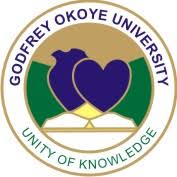MOLECULAR ANALYSIS
Below is an overview of some molecular term used in relation to DNA analysis
A. SDS PAGE
Sodium Dodecyl Sulfate, Molecular Biology Grade (SDS), is a detergent that is known to denature proteins. It is used in denaturing polyacrylamide gel electrophoresis for the determination of protein molecular weight.
SDS is an amphipathic surfactant. It denatures proteins by binding to the protein chain with its hydrocarbon tail, exposing normally buried regions and coating the protein chain with surfactant molecules.
SDS-PAGE separates proteins primarily by mass because the ionic detergent SDS denatures and binds to proteins to make them uniformly negatively charged. Thus, when a current is applied, all SDS-bound proteins in a sample will migrate through the gel toward the positively charged electrode.
The procedure involves localizing the protein of interest on the gel following SDS-PAGE, eluting the protein from the gel, removing SDS from the eluted sample, and finally renaturing the protein (enzymes, for example) for subsequent analysis. Proteins are extracted from gels by several methods. These include dissolution of the gel matrix, passive diffusion, and electrophoretic elution. Proteins eluted from gels have been used successfully in a variety of downstream applications, including protein chemistry, determination of amino acid composition, as antigens for antibody production etc.
B. MOLECULAR TYPING
Molecular typing is a way of identifying specific strains of microorganisms, such as bacteria or viruses, by looking at their genetic material. It is mainly used to pinpoint the source of foodborne outbreaks. It can also be used to identify which microorganisms are: Most virulent and cause serious diseases.
All organisms need four types of organic molecules: nucleic acids, proteins, carbohydrates and lipids; life cannot exist if any of these molecules are missing.
- Nucleic Acids. The nucleic acids are DNA and RNA, or deoxyribonucleic acid and ribonucleic acid, respectively. …
- Proteins. …
- Carbohydrates. …
- Lipids.
C. REVERSE TRANSCRIPTASE PCR (RT-PCR)
RT-PCR is that technology by which RNA molecules are converted into their complementary DNA (cDNA) sequences by reverse transcriptase, followed by the amplification of the newly synthesized cDNA by standard PCR procedures is very important in RT-PCR, and the efficiency of first-strand cDNA synthesis is one of the most important determinants in the success or failure of this method. For this reason, it is strategically better to make a large cDNA pool from which aliquots may be drawn for individual applications rather than repeating the same cDNA synthesis reaction over and over.
D. NUCLEOTIDE SEQUENCING AND ANALYSIS
Sequencing refers to putting events or information in a specific order. The ability to sequence requires higher-order thinking skills, from recognizing patterns to determining cause and effect and more. Sequencing helps students understand and organize material they’ve learned as well as helps them solve problems.
In bioinformatics, sequence analysis is the process of subjecting a DNA, RNA or peptide sequence to any of a wide range of analytical methods to understand its features, function, structure, or evolution. Methodologies used include sequence alignment, searches against biological databases, and others.
Sequencing is used in molecular biology to study genomes and the proteins they encode. Information obtained using sequencing allows researchers to identify changes in genes, associations with diseases and phenotypes, and identify potential drug targets.
In DNA sequencing, a read is an inferred sequence of base pairs (or base pair probabilities) corresponding to all or part of a single DNA fragment. A typical sequencing experiment involves fragmentation of the genome into millions of molecules, which are size-selected and ligated to adapters.
Each piece of DNA was attached to a radioactive label, and an X-ray picture was made of the gel to make the positions of the DNA bands visible. … As the DNA pieces move through the gel, the sequencing machine reads the order of DNA bases and stores this information in its computer memory.
Steps in DNA sequencing
- Sample preparation (DNA extraction)
- PCR amplification of target sequence.
- Amplicons purification.
- Sequencing pre-prep.
- DNA Sequencing.
- Data analysis.
